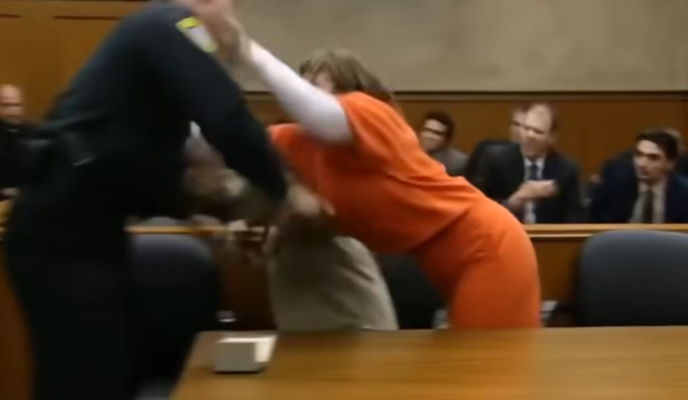California’s correctional system is once again at the center of public attention following a troubling event at Corcoran State Prison. The altercation between two incarcerated individuals has raised urgent questions about the safety of correctional facilities, the handling of high-risk inmates, and the broader challenges of prison reform in the United States.
While the specific details remain under investigation, what is clear is that the incident has brought national focus to longstanding concerns: how prisons monitor inmates with violent histories, whether mental health support is adequately prioritized, and what steps must be taken to prevent similar tragedies in the future.
This article explores the background of the case, the institutional challenges it has revealed, the responses from officials and reform advocates, and the lessons policymakers may draw from the event as they consider the future of correctional systems in California and beyond.
The Incident at Corcoran State Prison
Corcoran State Prison, located in California’s Central Valley, is one of the state’s largest and most secure facilities. Designed to house individuals convicted of serious crimes, it has a reputation for housing some of the most complex and high-risk inmates in the system.
On March 9, 2019, officials discovered that an altercation had occurred inside one of the prison cells, leaving one inmate with severe injuries. Another incarcerated person, identified by authorities as Jaime Osuna, was accused of playing a central role in the event. Osuna, who has a history of violence and was already serving a life sentence, became the focus of the investigation.
The incident shocked correctional staff and drew widespread attention because of the serious nature of the injuries involved. While prison violence is unfortunately not uncommon, experts emphasized that the severity of this case highlighted potential weaknesses in the oversight and management of individuals considered to be high-risk.
Official Response and Investigation
Following the discovery, the California Department of Corrections and Rehabilitation (CDCR) launched an internal investigation. Their immediate priority was to determine how such a serious incident could occur within a facility designed to maintain strict security protocols.
Investigators began reviewing:
-
Supervision Practices: Were prison staff making adequate rounds during the night?
-
Risk Assessments: Were the two inmates appropriately housed together, given their backgrounds?
-
Warning Signs: Did officers or mental health professionals overlook any red flags that could have indicated an increased likelihood of violence?
Authorities have acknowledged that prison environments are inherently unpredictable. However, the case has prompted state officials to reevaluate whether policies and safeguards are keeping pace with the unique challenges posed by inmates with violent or unstable histories.
Legal Proceedings and Public Reaction
Jaime Osuna was subsequently charged with multiple counts, including offenses related to violence and the possession of contraband. Because Osuna was already serving a life sentence without parole for a previous conviction, these additional charges have sparked debate about what consequences can meaningfully deter individuals in similar circumstances.
Legal experts note that cases involving prison violence are complex. The evidence is gathered in a tightly controlled environment, witness testimonies often come from other inmates, and staff security concerns add layers of difficulty. These factors may extend the legal process, sometimes leaving families and the public waiting years for resolution.
The public response has been mixed. On one hand, many are demanding accountability from correctional authorities, arguing that lapses in supervision directly enabled the incident. On the other, some see this as a grim but unsurprising reflection of a correctional system that has long struggled with overcrowding, staffing shortages, and insufficient mental health resources.
Understanding Jaime Osuna’s Background
Osuna’s case illustrates the challenges of managing inmates with extensive histories of violence. Convicted in 2011 for the murder of Yvette Pena, he was sentenced to life without parole. Throughout his incarceration, reports indicate he was monitored for mental health concerns and housed at different facilities before being transferred to Corcoran.
Correctional staff and outside experts are now questioning whether the mental health interventions provided were sufficient, or whether gaps in treatment and oversight left both Osuna and his cellmate vulnerable.
This raises a broader systemic question: how should correctional systems handle individuals whose behaviors present extreme risks, especially when traditional rehabilitation programs may not address their needs?
Broader Challenges of Prison Safety
The Corcoran incident is not an isolated case but part of a much larger conversation about prison safety across the United States. Correctional facilities face unique challenges, including:
-
Overcrowding – Many prisons house far more inmates than they were designed to accommodate, making supervision difficult and increasing tension.
-
Staffing Shortages – Correctional officers are often stretched thin, particularly during overnight hours, when most violent incidents occur.
-
Mental Health Needs – A significant portion of the prison population struggles with mental health conditions, yet access to adequate care remains inconsistent.
-
Housing Assignments – Decisions about which inmates share a cell are critical. When individuals with conflicting needs or histories are placed together, risks increase dramatically.
Advocates argue that without addressing these systemic challenges, incidents like the one at Corcoran are likely to continue.
Mental Health and Violence in Correctional Facilities
One of the most pressing issues highlighted by this case is the role of mental health in prison violence. Experts estimate that more than half of incarcerated individuals in the U.S. have some form of mental health condition, ranging from depression to severe psychiatric disorders.
When these conditions go untreated—or when resources are too limited to provide consistent therapy and monitoring—problems can escalate. For high-risk inmates, untreated conditions can translate into aggression, unpredictable behavior, and heightened risks for those around them.
Improved access to mental health care in prisons could help by:
-
Identifying early warning signs of potential violence
-
Providing therapy or medication to stabilize individuals
-
Offering conflict-resolution programs to reduce tension
-
Preparing inmates for eventual reintegration into society
The Corcoran case has reignited debate about whether California, and the nation as a whole, is investing enough in this area.
Calls for Prison Reform
Reform advocates say that while accountability for this particular incident is important, the larger goal must be preventing similar events in the future. To achieve that, they recommend reforms in several areas:
-
Enhanced Supervision: More frequent cell checks, particularly during vulnerable overnight hours.
-
Use of Technology: Expanded surveillance tools to help officers monitor inmate activity more effectively.
-
Mental Health Services: Increased staffing of mental health professionals within prisons and more robust treatment programs.
-
Inmate Housing Policies: Stricter criteria for cellmate pairings, especially when one inmate has a documented history of violence.
-
Training for Staff: More comprehensive training in conflict de-escalation, crisis response, and recognizing behavioral red flags.
Advocates argue that reforms not only protect inmates but also correctional staff and, ultimately, the public. Safer prisons reduce the likelihood of violent incidents spilling over into communities once individuals are released.
Community and National Implications
The story has reached beyond California, sparking nationwide discussions about the state of the American prison system. Lawmakers, correctional experts, and community advocates see the Corcoran incident as emblematic of a system under strain.
Concerns about overcrowding, understaffing, and inconsistent policies are not unique to California—they are issues faced by correctional facilities across the country. This has prompted some national policymakers to call for federal support in the form of funding, oversight, and shared best practices.
Community organizations dedicated to justice reform have also seized on the incident as a reminder that prison conditions are not just about punishment but also about safety, human rights, and rehabilitation.
Lessons Moving Forward
Several lessons can be drawn from the incident:
-
High-Risk Inmates Require Extra Vigilance: Individuals with violent histories must be monitored with consistent supervision, regardless of time of day.
-
Mental Health Cannot Be Secondary: Addressing psychological conditions is as essential as maintaining physical security.
-
Policies Must Evolve: Correctional systems should continuously evaluate and update their protocols as new risks emerge.
-
Staff Support Is Crucial: Officers and staff need the training, resources, and manageable workloads that allow them to keep facilities safe.
The path forward will not be simple, but experts agree that ignoring these lessons will only invite future crises.
Conclusion: A Call for Comprehensive Change
The altercation at Corcoran State Prison serves as a sobering reminder of the immense responsibilities carried by correctional institutions. Prisons are expected not only to enforce accountability for crimes but also to safeguard inmates, support rehabilitation, and protect the broader community.
The incident underscores the urgent need for comprehensive reform—strengthening security, investing in mental health care, and rethinking how high-risk inmates are managed. California has the opportunity to lead by example, demonstrating that safety and rehabilitation are not opposing goals but essential partners in creating a more just and effective correctional system.
As investigations continue and the legal process unfolds, the spotlight remains on California’s prisons. Whether the system will rise to the challenge of reform remains to be seen—but what is clear is that the nation is watching, and the stakes could not be higher.



